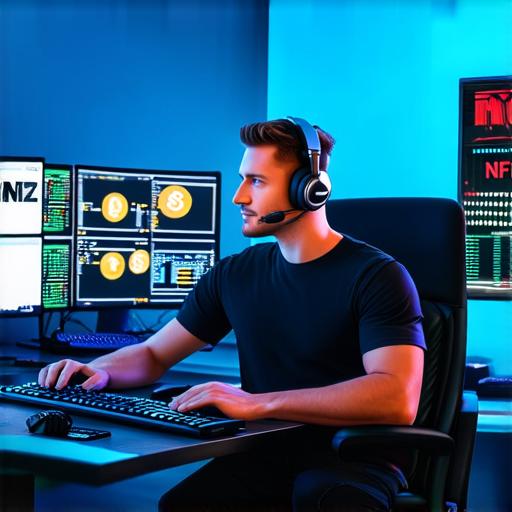Ethereum: The Most Popular Blockchain for NFTs
Ethereum is the undisputed leader in the world of NFTs, with a significant market share and a thriving ecosystem of artists, collectors, and developers. Ethereum’s smart contract functionality enables creators to mint, sell, and trade NFTs seamlessly, while also providing transparency, security, and immutability. Ethereum’s blockchain architecture is designed to handle high transaction volumes, making it ideal for marketplaces and auctions.
However, Ethereum’s popularity has come with its fair share of challenges. The network’s congestion and high gas fees have led to slow transaction speeds and high costs, which can deter some users from using the platform. Additionally, Ethereum’s reliance on a single consensus mechanism (Proof-of-Work) may become unsustainable in the future, leading to potential security vulnerabilities and scalability issues.

EOS: A High-Performance Blockchain for NFTs
EOS is a relatively new blockchain that has gained traction in the NFT space due to its high transaction speeds and low gas fees. EOS uses a Delegated Proof-of-Stake consensus mechanism, which allows for faster confirmation times and lower energy consumption compared to Ethereum’s PoW mechanism. Additionally, EOS’s blockchain architecture is designed to handle large volumes of transactions, making it ideal for high-performance applications.
EOS also has a growing ecosystem of developers and creators, with several NFT marketplaces and games already built on the platform. However, EOS’s decentralization and governance models may be less mature compared to Ethereum, which could lead to potential security vulnerabilities and scalability issues in the future.
Binance Smart Chain: A Scalable Blockchain for NFTs
Binance Smart Chain is a relatively new blockchain that was developed by Binance, one of the world’s largest cryptocurrency exchanges. Binance Smart Chain uses a Proof-of-Stake consensus mechanism and offers fast transaction speeds and low gas fees, making it an attractive alternative to Ethereum for NFT creators and collectors. Additionally, Binance Smart Chain has a growing ecosystem of developers and creators, with several NFT marketplaces and games already built on the platform.
However, Binance Smart Chain’s decentralization and governance models may be less mature compared to Ethereum and EOS, which could lead to potential security vulnerabilities and scalability issues in the future. Additionally, Binance Smart Chain’s reliance on a single consensus mechanism may limit its flexibility and adaptability compared to other blockchain platforms.
FAQs
1. Which blockchain is best for NFTs?
Ethereum is currently the most popular and widely used blockchain for NFTs, but EOS and Binance Smart Chain are also gaining traction due to their high transaction speeds and low gas fees. The choice of blockchain ultimately depends on the specific needs and requirements of the project or application.
2. Can NFTs be used on other blockchains besides Ethereum?
Yes, NFTs can be created and traded on a variety of blockchain platforms, including EOS, Binance Smart Chain, Flow, Tezos, and Solana. The choice of blockchain will depend on the specific needs and requirements of the project or application.
3. How do I create an NFT?
To create an NFT, you’ll need to use a smart contract platform like Ethereum, EOS, or Binance Smart Chain. You’ll also need to define the characteristics of your NFT, such as its rarity, ownership rights, and monetization strategy. There are several tools and platforms available that can help you create and mint NFTs, including OpenSea, Rarible, and SuperRare.
4. What is a gas fee?
A gas fee is the cost of executing a transaction on a blockchain network. It is typically measured in units of cryptocurrency (such as Ether for Ethereum) and is paid to the network’s miners or stakers for validating and processing transactions. Gas fees can vary depending on network congestion, transaction volume, and other factors.
5. What is a decentralized application?
A decentralized application (dApp) is an application that runs on a blockchain network rather than a central server. dApps are typically more secure, transparent, and resistant to censorship compared to traditional centralized applications. They can be used for a variety of purposes, including social networking, gaming, marketplaces, and more.
Conclusion
In conclusion, the choice of blockchain for NFTs ultimately depends on the specific needs and requirements of the project or application. Ethereum remains the most popular and widely used platform, but EOS and Binance Smart Chain are also gaining traction due to their high transaction speeds and low gas fees. As the NFT market continues to grow and evolve, we can expect to see new blockchain platforms emerge that cater to specific use cases and requirements.
